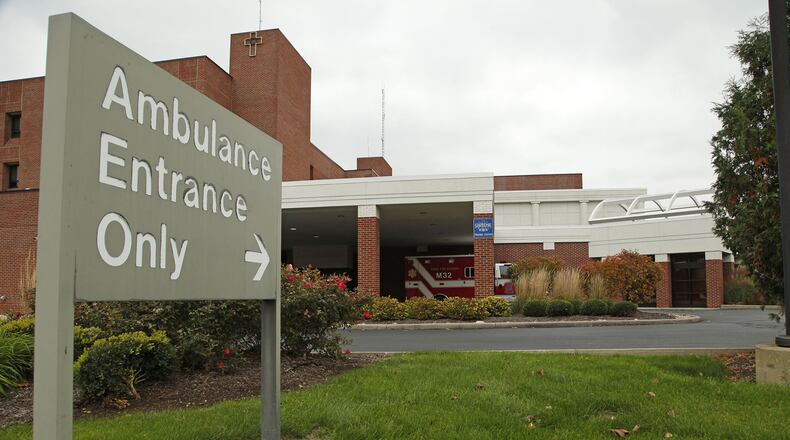PREVIOUS COVERAGE: Greene County voters asked to renew levy for hospital
Brandon Huddleson, Greene County Administrator, said county commission should have been directly informed about the change. He said he found out about it when he overheard a conversation about the ICU closing.
“We told them that it’s not up to their interpretation of the levy language of whether they still qualify, it’s up to that of the commissioners,” said Brandon Huddleson, Greene County administrator. “The commissioners expect the same level of service or more, not less, at Greene Memorial.”
Patients who now need intensive care unit care can’t stay at the Xenia hospital and will be taken 12 miles away to Soin Medical Center in Beavercreek.
Greene Memorial Hospital President Rick Dodds said in order to continue to provide ICU services, it was necessary for it to consolidate with Soin.
Dodds said the patient is at the center of all they do and “we made this difficult decision because it was in the best interest of our patients.”
MORE: Why empty beds getting more common in area hospitals
He said the levy provides funds for services including stroke and cardiac care, rural health centers, emergency room equipment and cancer care.
“We continue to honor the spirit and intent of the levy, which does not include funding for ICU services. We regularly evaluate services at all of our facilities, taking into consideration a number of factors, including the community’s health needs and patient volume,” Dodds said.
The discussion around the ICU follows a long running debate in the community over the value of the hospital levy, which often resurfaces during years the levy is up for a vote.
In 2018, Greene County voters renewed a a five-year, .5-mill levy that will generate $1.75 million a year to support Greene Memorial Hospital. The levy costs homeowners close to $14 a year for every $100,000 value of property.
About 5.8% of Greene Memorial’s operating expense was paid for by the levy for 2019, according to the latest financial report provided to the county. The hospital also reported $7.2 million in uncompensated and indigent care provided. The report filed Jan. 30 states the hospital relied significantly on levy dollars in 2019 to cover charity care and operating expenses.
MORE: Popularity of drug delivery, online care exploding
The commissioners will be monitoring the situation for 60 days to see if services are restored, Huddleson said. The commissioners already review regular financial reports from the hospital to watch how the money is being spent.
On its most recent hospital registration, the 49-bed hospital reported eight ICU/CCU beds used by 16 patients for 1,575 patient days of care for 2018.
In the latest Ohio Health Market Review, report author and consultant Allan Baumgarten found that Kettering Health Network had a 12.4% margin in 2016 when including investment income and philanthropy, while Greene Memorial had a -9.1% margin. That year, almost 87% of patients at Greene Memorial were paying with Medicaid or Medicare, which pay hospitals far less for services than health insurance provided by a patient’s employer.
Over the years, some other service lines have left the hospital including in 2009, the hospital stopped offering maternity services, and in 2012 inpatient psychiatric and rehabilitation services shut down.
The financial report also shows an increase in outpatient visits, surgery cases and discharges since 2016, and contained a list of capital purchases made in 2019, such as a Da Vinci robotic surgery system.
Dodds said hospital officials “value our partnership with the county, the city of Xenia and all community leaders in Greene County.”
“We share a common objective to serve the health care needs of the entire county. While Kettering Health Network has made significant investments in Greene Memorial since its affiliation in 2008, we still depend on the levy to help sustain the hospital,” he said.
Huddleson said they want to make sure the hospital is living up to the terms of the levy but it is a tough situation because hospital leaders have made it clear that if there wasn’t a levy “that it would force that hospital to close.”
“It’s sort of a catch 22,” he said.
About the Author
